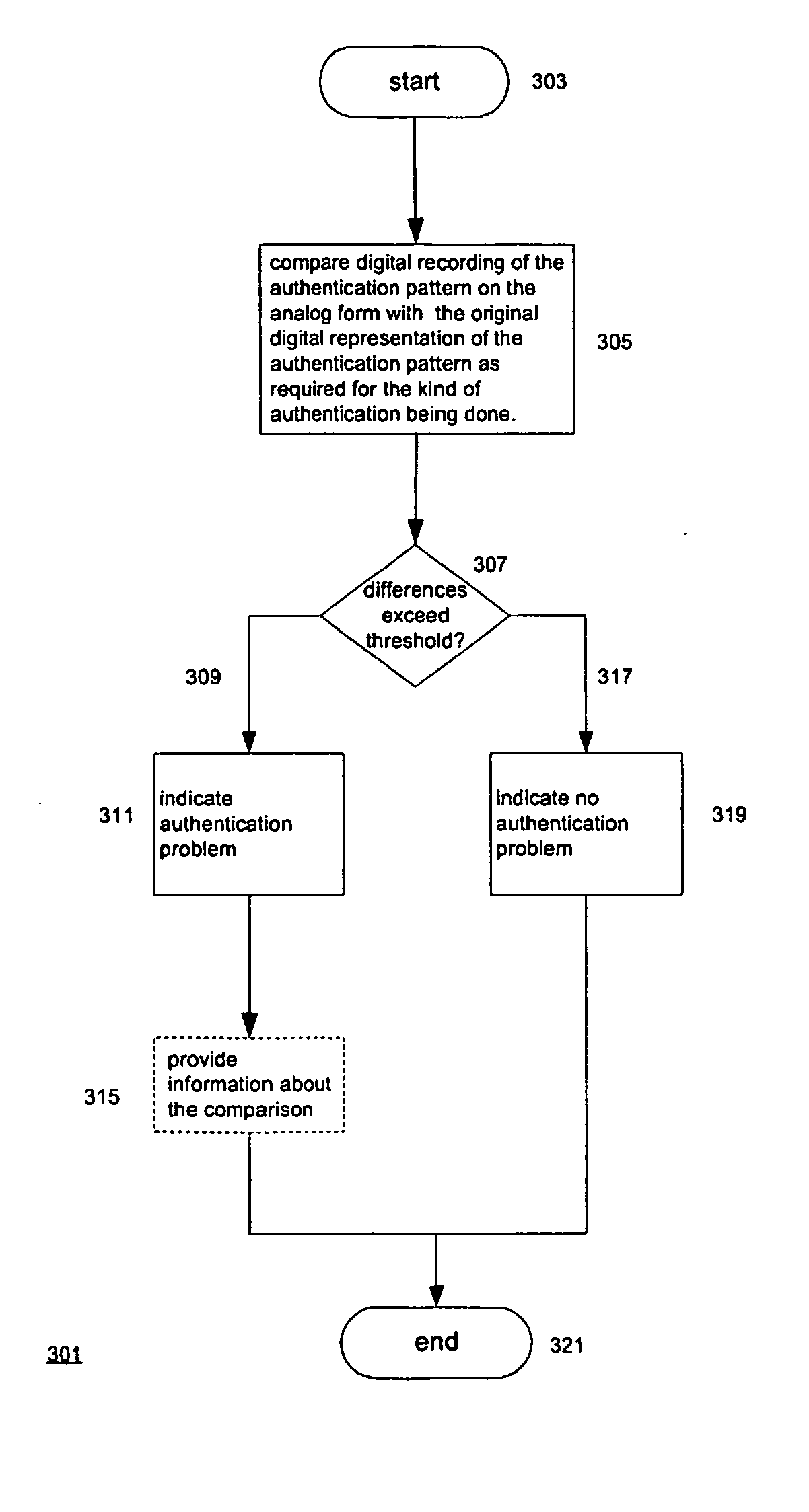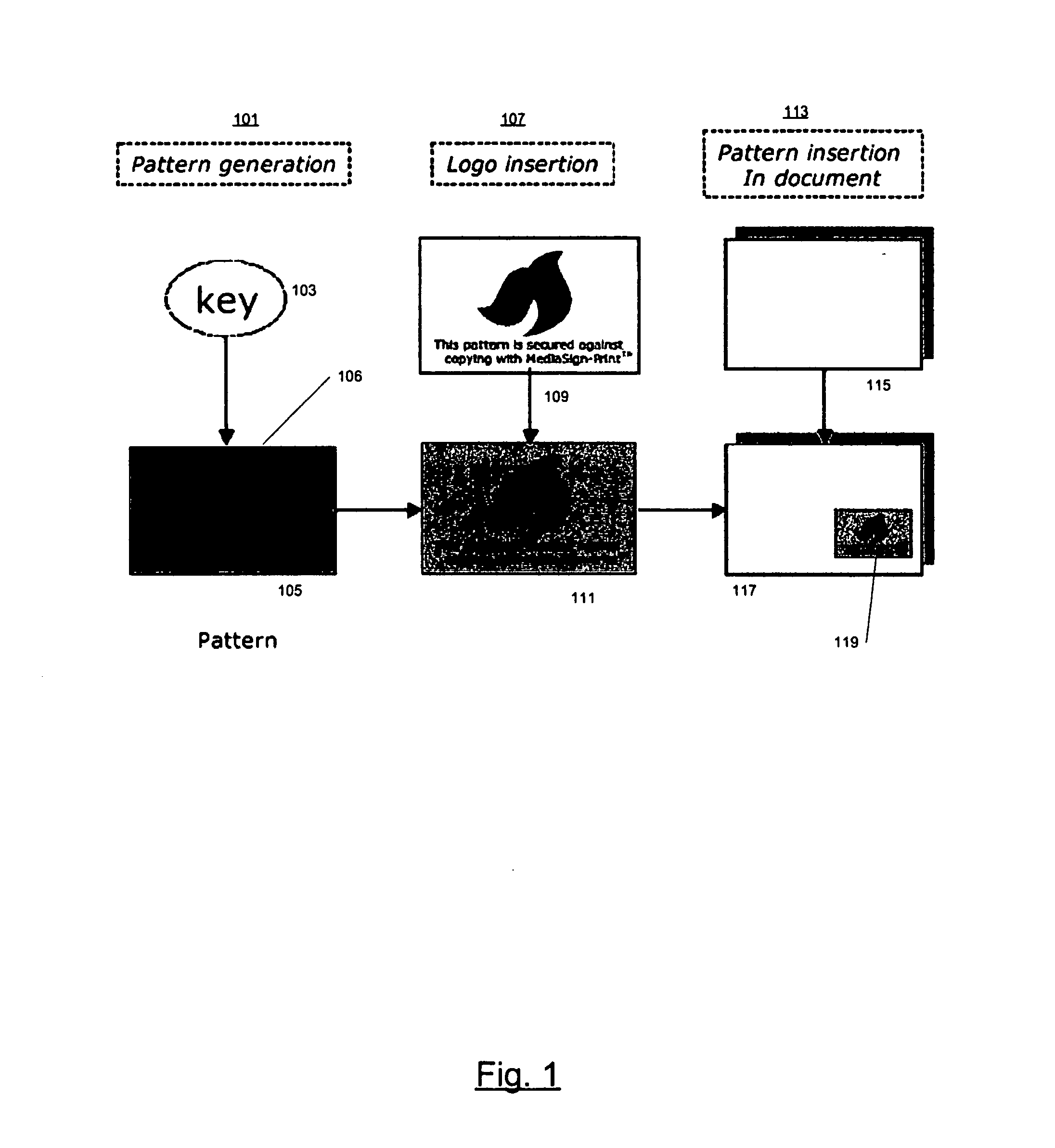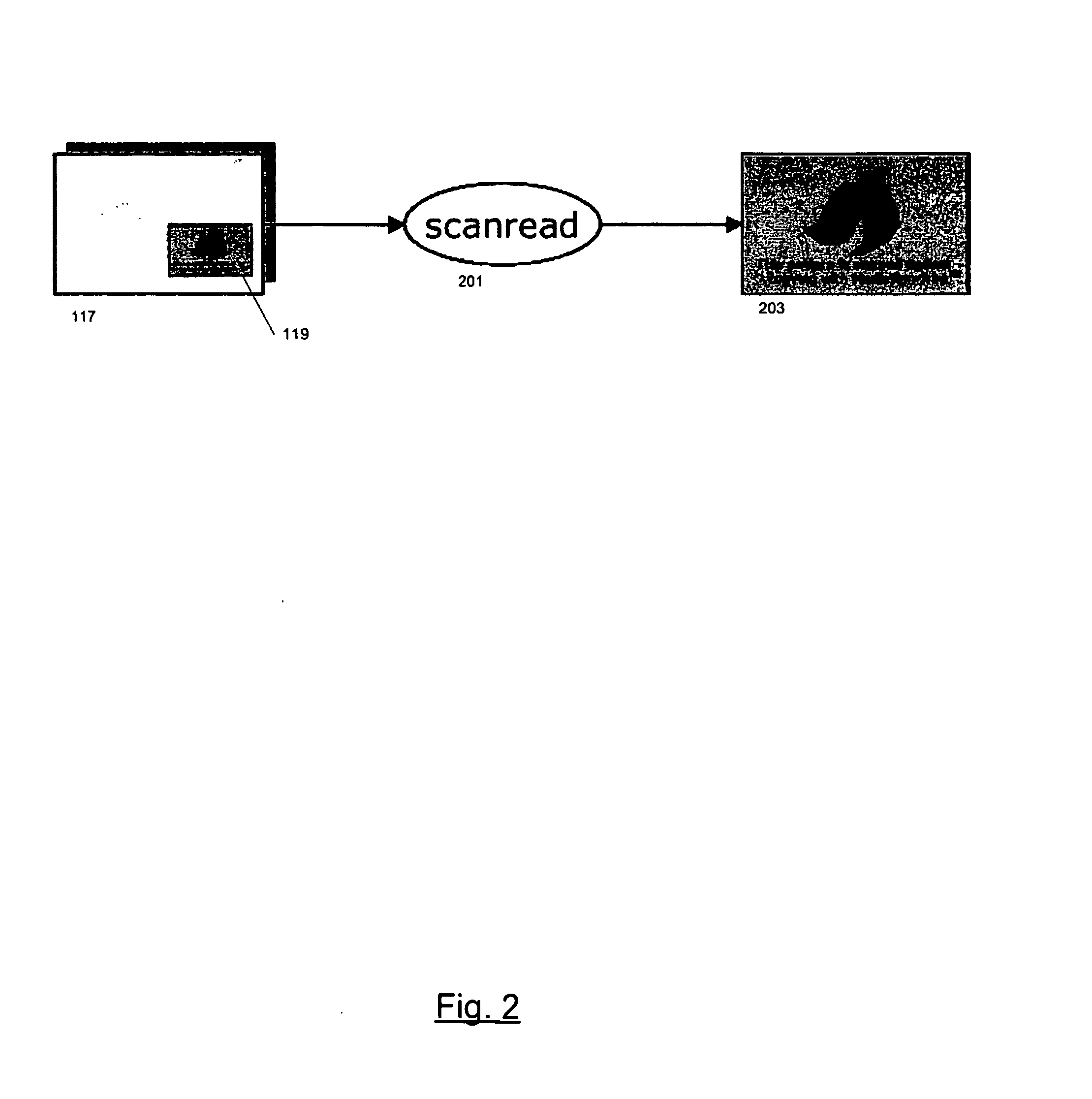Visible authentication patterns for printed document
a technology of visible authentication and printed documents, applied in the field of security features of printed documents, can solve the problems of reducing the value of all the techniques, endangering the reputation and value of the brands themselves, and the progress of copying technology, so as to achieve the effect of improving the authenticity of the printed document, and improving the quality of the printed documen
- Summary
- Abstract
- Description
- Claims
- Application Information
AI Technical Summary
Problems solved by technology
Method used
Image
Examples
Embodiment Construction
Using the Mere Presence of Watermarks to Authenticate a Document
[0041] Generally speaking, authentication techniques for documents which involve watermarks use the watermark to hide some kind of authentication information for the document in a graphical element in the document. An example is using the watermark to hide a digest made from the document's character codes, as explained in U.S. Pat. No. 6,243,480, cited above. A difficulty with techniques that use watermarks to hide authentication information in a graphical element of a document is that wear and tear on the document often renders the watermark unreadable.
[0042] U.S. Ser. No. 10 / 287,206, the parent of the present application, explores ways of obtaining at least some information from unreadable watermarks and ways of making watermarks more robust in the face of lossy transformations such as those caused by wear and tear on a document. Among the things that the inventors of U.S. Ser. No. 10 / 287,206 realized in the course...
PUM
 Login to View More
Login to View More Abstract
Description
Claims
Application Information
 Login to View More
Login to View More - R&D
- Intellectual Property
- Life Sciences
- Materials
- Tech Scout
- Unparalleled Data Quality
- Higher Quality Content
- 60% Fewer Hallucinations
Browse by: Latest US Patents, China's latest patents, Technical Efficacy Thesaurus, Application Domain, Technology Topic, Popular Technical Reports.
© 2025 PatSnap. All rights reserved.Legal|Privacy policy|Modern Slavery Act Transparency Statement|Sitemap|About US| Contact US: help@patsnap.com



